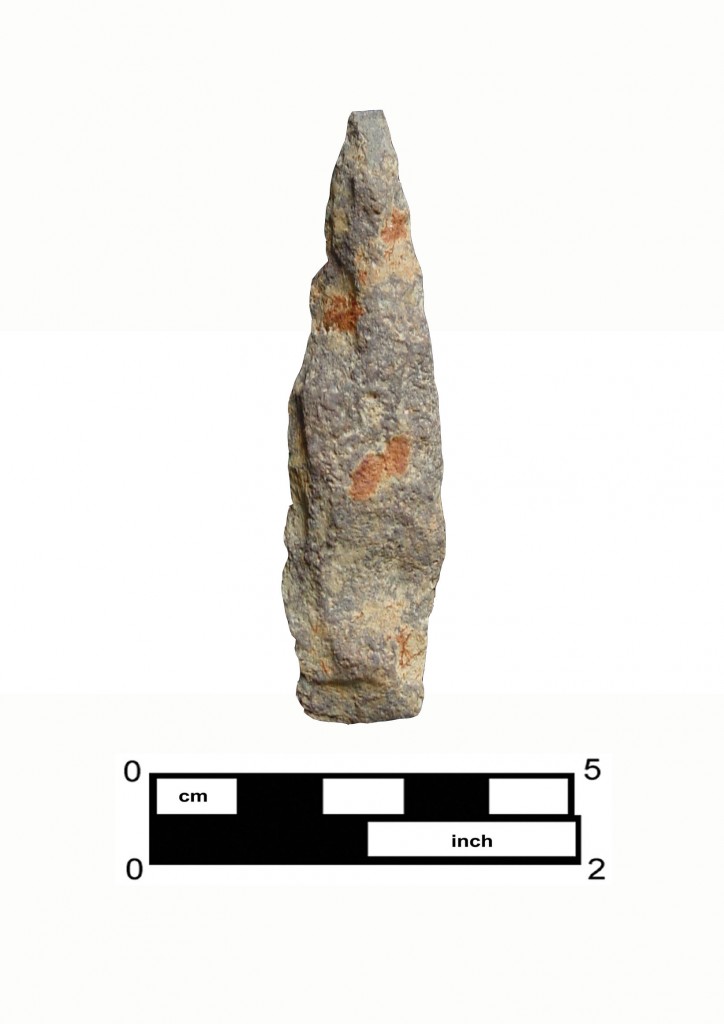Artifact of the Month – January 2015
To Artifact of the Month Index
To PAF Home
NATIVE AMERICAN HEARTHS: Ancient Native Culture along the Delaware

This concentration of fractured rocks was discovered in the Fishtown neighborhood of Philadelphia during archaeological investigations undertaken for a Pennsylvania Department of Transportation highway project. The rock configuration comprises a Native American hearth.
Designated by archaeologists as FCR, for ‘fire cracked rock’, such rocks have been fractured by repeated firepit heating. Fire-cracked rock exhibits a distinctive appearance that differentiates it from ordinary non-heat fractured stone. These rock fragments are typically characterized by heat-induced discoloration and are frequently found broken into multiple jagged, angular pieces. In some instances the presence of wood charcoal flecking, and/or the presence of thermally altered (reddened) soils, can also be defining characteristics of hearths.

Such hearths, or firepits, were used by Native Americans for a variety of reasons, though primarily for heating, cooking, and processing plant and animal foods such as nuts and fish. Wood and other flammable plant materials would have been used to fuel the fire. Native hearths were often lined with locally available rock or stone, in part because the rocks help to retain the heat generated by the fire. Once heated, these rocks could also be placed into pots or other cooking vessels in order to boil water.
It is not uncommon to find food remnants, such as bone fragments, carbonized nut shell, or even corn cobs, within and surrounding Native American hearths. Because of this, hearth features can be useful for helping archaeologists better understand the diets of Native peoples who lived hundreds or even thousands of years ago. At the Gunnar’s Run site in Fishtown, a burned projectile point (more commonly known as an “arrowhead”) was also recovered from within one particular hearth feature (shown below).


Hearths containing charcoal or food remnants are extremely important tools for more precisely dating when a specific campsite was occupied. Radiocarbon (C-14) technology can be used to determine the age of the wood charcoal, burned bone, or charred nut shells found in these firepits – often with astonishing accuracy. A number of hearth features found during the Pennsylvania Department of Transportation’s I-95/Girard Avenue archaeological excavations (in the area of the Fishtown/Kennsington neighborhoods) have been successfully radiocarbon dated, with the oldest determined to have been created in or about 3,563 B.C.
Information for this month’s artifact was contributed by George Cress of AECOM (formerly the URS Corporation), Burlington, NJ
To Artifact of the Month Index
To PAF Home
by admin